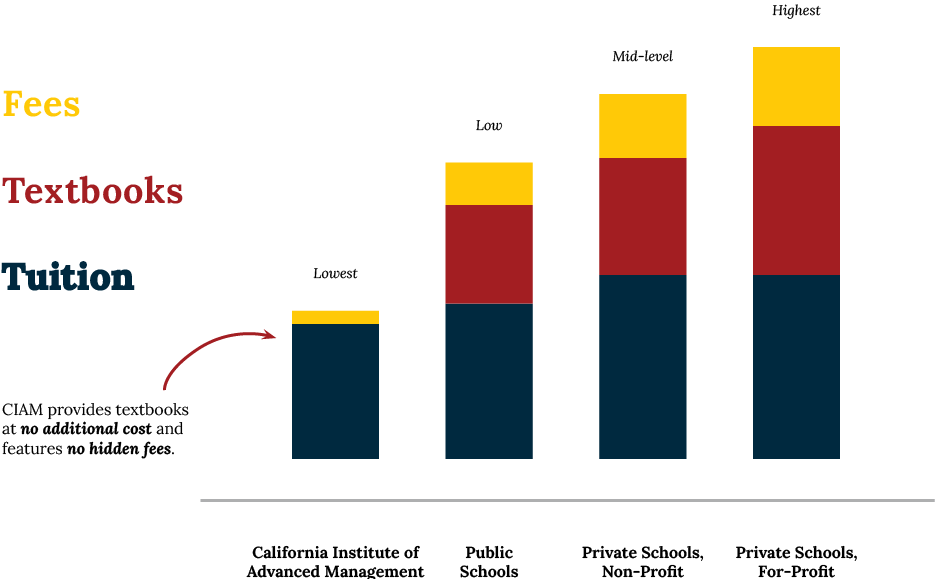Why Choose California Institute of Advanced Management?
Accredited, Nonprofit Institution
Our mission rests on the bedrock values of academic excellence, integrity, and the fulfillment of duty to our society. We strive to produce successful, responsible leaders who will take what they learn at CIAM and apply it to future career pathways.
High Impact Learning with Real Clients
Gain real-world experience through social impact projects designed to help local businesses, communities, and nonprofits thrive. Our MS, MA and MBA programs help our students to make a positive difference both locally and globally.
Dedicated Faculty Support,
Small Class Sizes
We understand how necessary faculty support can be in providing guidance and resources for
students. CIAM features dedicated faculty, offering personalized support to foster the most
growth in our student body.
Built for Affordability, Generous Scholarships
CIAM is dedicated to keeping our high-quality, world-class, experiential-learning-based education accessible to everyone. Contact us to discover how we work to make our MS, MA and MBA programs more accessible to our students.
Find the right program for you:
Facts & Figures
At a Glance
200+
Student Consulting Projects to Date
$350,000+
In Scholarship Aid
0
Hidden Fees or Textbook Costs
High-Impact Learning
Next Generation Business Education for Positive Change
Student-Led Consulting Projects
Build your experience by consulting for real businesses that need your help.
Student Stories
Our story is told through our people — a community of amazing students, passionate leaders, and accomplished alumni who continue to build the CIAM community.
People, Planet, Profit:
The Future of Business
Being successful and being socially conscious are not mutually exclusive. The California Institute of Advanced Management firmly believes businesses should commit to focusing as much on people and the planet as on profits. Our educational approach teaches students to design solutions that account for human, economic, and environmental concerns for holistic outcomes and prosperity for all. Learn more about how our master's programs seek to address social and environmental concerns by contacting us today.
Start Your MBA Program With CIAM
If you have been looking for MBA programs in California, look no further. The California Institute of Advanced Management is dedicated to providing our students with a quality education without breaking the bank. Our nonprofit university allows students to get an MBA in Executive Management with concentrations in Project Management and Business Analytics. We strive to create an environment where students can thrive and apply their knowledge to future endeavors. Reach out to our team today to learn more about why the California Institute of Advanced Management is a great fit for you.
FUTURE
STUDENTS
CURRENT
STUDENTS
Campus Blog
Latest Information - What is new & exciting at CIAM:
















